How to Remove Rust from Cast Iron
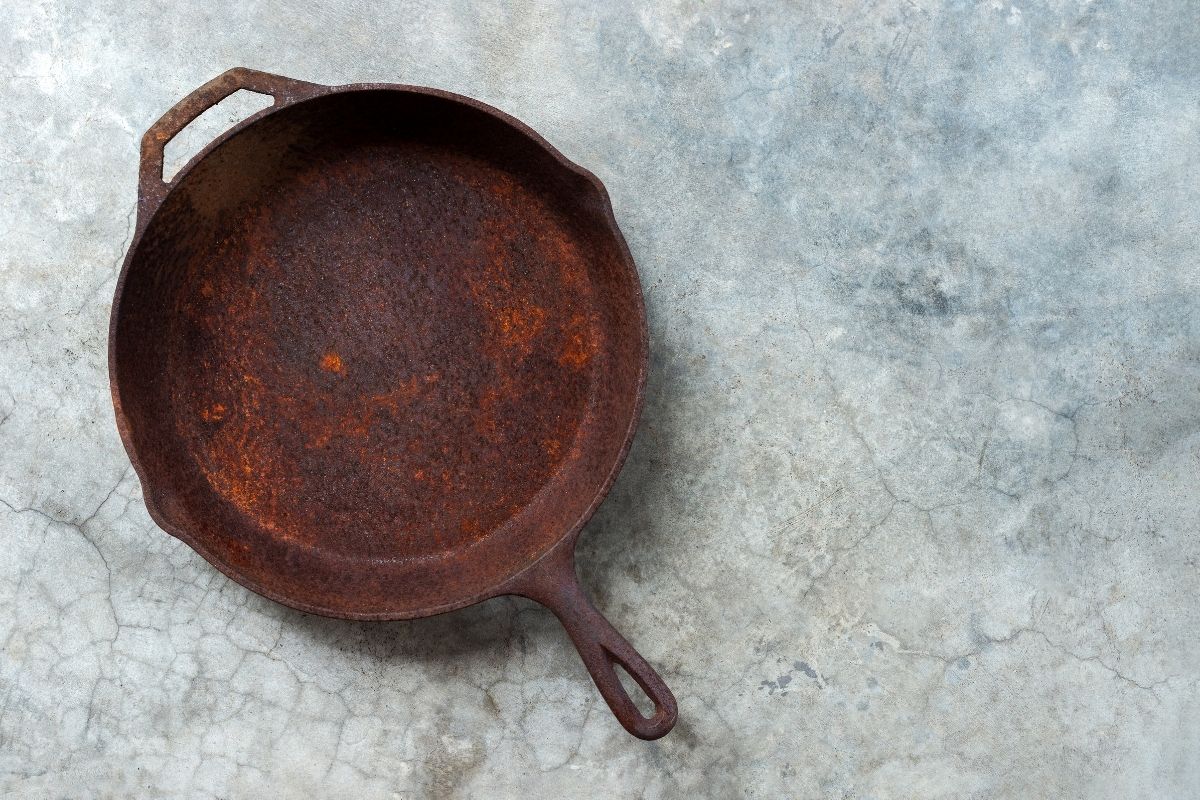
Rusty cast iron is a very common problem, but fortunately it is one that can be solved! This post will cover several different methods for how to remove rust from your cast iron pan. With these methods you can bring almost any cast iron pan back to that beautiful non-stick black patina!
(As an Amazon Associate I earn from qualifying purchases. This means that if you purchase an item via a link on my website I earn a small commission at no extra cost to you.)
Have a little bit of surface rust?
Once I asked my husband to take a roast out of the oven while I was gone. I told him to keep it covered thinking, “That way it’ll be a little bit warm when I get home.” This gal did not think that all the way through. Condensation and cast iron don’t mix. Oops.
So I arrived home, yes, to a warm roast. And a dripping wet dutch oven that was already forming rust. Doh! The dutch oven itself came clean right away and I could rescue it with a quick oiling. But the lid, alas – it still didn’t look good after oiling it. I had to completely re-season it.
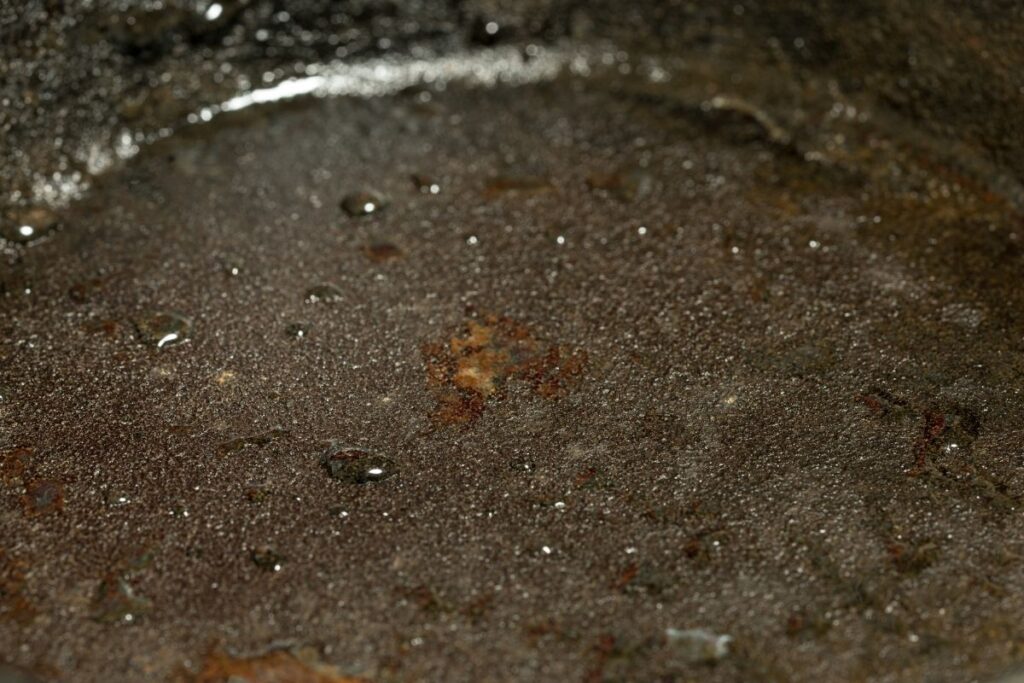
All that to say, however, that a little surface rust, while a pain in the neck, is not a real issue. It’s DEFINITELY not a reason to get rid of your beautiful oven/skillet/pan/pot/griddle/wok (yes, they DO make cast iron woks! How cool is that?).
Before deciding that your cast iron needs a harsh scrubbing, try cleaning it gently and re-oiling to see if that will take care of it!
Scrub It Clean!
For this method of rust removal, you only need a steel wool scrubber or stiff bristled brush and some good old fashioned elbow grease. You can use dish detergent too if necessary.
- Scrub that rust away with some steel wool or a stiff bristled brush.
- There’s no need to be gentle here! The reason it’s a good idea to be gentle when scrubbing cast iron clean is to avoid removing the carbonized oil which seasons your pan and keeps it non-stick. We’ll be re-seasoning the pan to restore that carbonized oil anyway, so scrub as hard as you need to!
- You can also use dish soap for this step to help remove excess gunk from your pan. Again, this is something to avoid when trying to preserve your pan’s seasoning – but that’s not what we’re trying to do here!
- Once clean, dry completely using a lint-free cloth. This is essential to prevent more rust from forming. Your pan might look more gray and dull than you’re used to. That’s just because your scrubbing likely exposed much of the raw cast iron! We’ll replace that black finish in the next step. 🙂
- Re-season immediately. Now is not the time to take a snack and Netflix break unless you want to spend another 10 minutes scrubbing rust again. You can scroll to the end of this post to see instructions for re-seasoning!
Scrubbing alone isn’t working. My pan is too rusty!
These next two methods might work for you if haven’t had success with scrubbing alone. Also, if you don’t want to use as much elbow grease, you might use one of these methods on your first try.
Try Some Baking Soda
This method uses baking soda and dish soap, along with your scrubber of choice.
- Sprinkle baking soda generously over the rusty parts of your pan.
- Pour dish soap over the baking soda then scrub gently, adding a little water if needed. This should loosen the rust easily without requiring harsh scrubbing.
- Rinse thoroughly, then dry completely.
- Re-season.
The Potato
This second method is actually my favorite for treating my rusty cast iron. It’s a little easier on my hands, and it’s all-natural! For this method, you’ll need coarse sea salt and a potato. Yes, you read that right. A potato.
Why a potato??? Well, according to my research, potatoes contain oxalic acid, which can help to break down rust. If I were a scientist I would explain it more, but I don’t really understand. I can say, however, that I have seen it work!!
- Sprinkle your rusty pan generously with coarse sea salt.
- Cut a potato in half and put the cut side down. This makes it easy for you to grip on the end.
- Scrub the cast iron with small circling motions until the rust lifts off.
- Rinse pan thoroughly and dry completely.
- Re-season.
Is your cast iron VERY RUSTY?
What if you’ve found a gem of a skillet, just the size and type you’ve been wanting, at the local thrift store? Except there’s just one problem. It looks like it was dug out of a shipwreck.
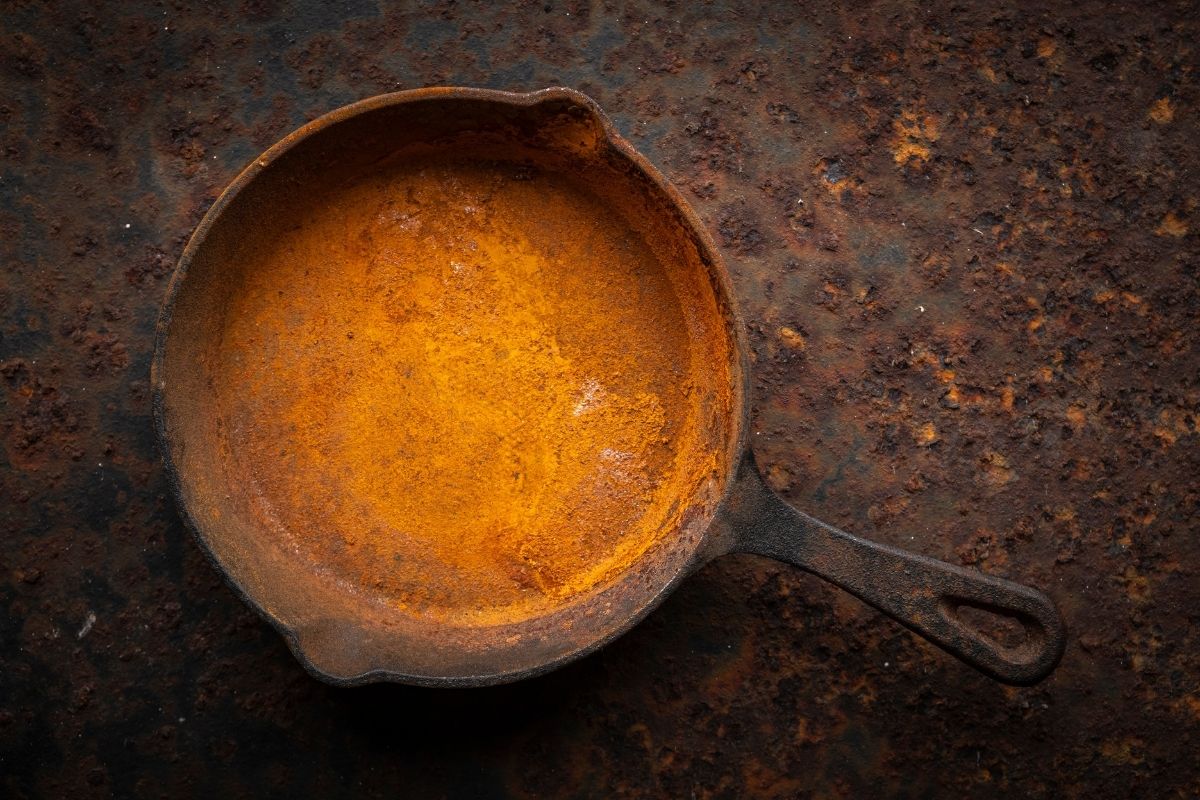
You might be tempted to leave it behind. But never fear, that cast iron can most likely be that beautiful, carbonized black again. (Check pan for pitting. Very minor pitting may be able to be corrected with multiple seasonings, but large pitting indicates the pan is no longer usable.)
Severe rust does require a little bit more work. Just focus on the reward of that shiny black pan at the end! There are two methods you can try.
Vinegar Soak
This method comes with a small caution. Vinegar is great at eating rust. It is also great, however, at eating actual cast iron. So make sure you keep a close eye on your pan and don’t let it soak too long!
Another thing to bear in mind is whether you want to use your sink for a rusty vinegar soak. Especially if your sink is white, you may prefer to soak in a bucket or aluminum tub.
For this method you will need enough vinegar to make a 1:1 vinegar/warm water mixture to cover your entire pan, a bucket or aluminum tub, dish soap, and your scrubber of choice.
- Make a 1:1 solution of distilled white vinegar and warm water. Be sure it’s enough to cover your entire pan.
- Put the rusty pan in to soak in the vinegar solution. Check after fifteen minutes to see if the rust is beginning to flake off when you scratch it gently with your fingernail. Check every 15-30 minutes until rust is flaking off. CAUTION: Do NOT leave in vinegar solution longer than 8 hours. In fact, less than 2 hours is ideal. If you leave it too long, it can ruin the pan.
- Remove pan from vinegar solution and rinse with warm water.
- Put dish soap on the pan and scrub until clean. Any remaining rust should lift easily after the vinegar soak.
- Rinse thoroughly and Dry completely.
- Re-season.
Heat
I have read about people restoring their cast iron with heat, but I have never tried it myself. Some people even clean cast iron with fire! I have not tried this method because it seems like it carries the highest risk of damaging your cookware.
DISCLAIMER: Before trying this method I think it’s fair that you know: I have heard anecdotes of cast iron warping when it’s exposed to too much heat. Especially if your oven has a very high-heat self-cleaning cycle (550 or higher), you may be wise to avoid this approach. Unless you don’t mind risking the ruin of your pan.
For this method you just need some dish soap and your scrubber of choice. Oh, and an oven with a self-cleaning cycle!
- Place your rusty cast iron in the oven.
- Set your oven to the self cleaning cycle.
- Once the cleaning cycle is over, LEAVE THE PAN IN THE OVEN UNTIL THE OVEN COOLS DOWN COMPLETELY – AT LEAST AN HOUR!!! If you open the oven right away, the sudden change in temperature can actually crack your cast iron!
- AFTER YOUR PAN IS COMPLETELY COOL, remove from oven. Most of the rust should have flaked off. Any remaining rust or dirt can be scrubbed off using dish soap and a scrubber.
- Rinse thoroughly and dry completely.
- Re-season.
How do I Re-Season my Cast Iron After the Rust is Gone?
It is essential to re-season your cast iron if you have scrubbed any of your seasoning away in the process of removing the rust. This is also something you might want to do periodically if it looks like your seasoning finish is a little dull, or if you find your food is sticking a lot when you’re cooking.
Before I give you step-by-step instructions, it’s important to go quickly over what oils work best when you’re re-seasoning. You want to aim for an oil that has a high smoke point (meaning that the oil can reach a higher temperature before it burns and starts to smoke).
Many people swear by vegetable oil or shortening (like Crisco). I know it works very well as a non-stick seasoning for cast iron; however, if you (like me) are eager to avoid corn, soybean, and canola oils, you may want to use an alternative.
My recommendation is coconut oil, but grapeseed, flaxseed, and avocado oil are good options as well. You can also use lard or even bacon grease, but only use these oils if you will be using your pans frequently (multiple times a week). If you plan to put your pans away in the cupboard for months at a time, lard or bacon grease could become rancid.
To Re-Season Cast Iron:
- Preheat oven to 425 Fahrenheit.
- After cleaning and drying your cast iron thoroughly, cover the entire pan, including the bottom and any handles, with a thin coating of oil.
- Let the pan sit for about 10 minutes so the oil can settle into the teeny crevices.
- Wipe any excess oil from the pan (if you don’t, your cast iron could get sticky).
- Place pan upside down in the middle of the oven. Place a pan or piece of aluminum foil on the bottom rack to catch any oil drippings.
- Let pan bake for an hour, then turn the oven off and let the pan cool in the oven.
- Repeat as many times as needed until your pan has that shiny black non-stick finish.

How to Prevent Rust on Your Cast Iron Pans
So it would be nice now that you’ve worked so hard for that beautiful carbonized finish to know how to keep that pan from getting rusty again, right?
- Don’t wash it more than necessary. If you’re cooking up something that doesn’t stick, you don’t need to use water to clean it. You can simply wipe it with a towel after the pan has cooled to remove any remaining bits of food. (Although use a towel you don’t want to keep beautiful – cast iron leaves black residue!)
- Dry the pan thoroughly after washing. You’ll have rust again very quickly if you leave your pan in the drainer to drip dry, or if you aren’t thorough when you towel dry it. I like to put it on a warm burner to let any leftover moisture evaporate away.
- Lightly oil after washing. This can help protect your pan against rust, and also keep its non-stick surface!
- Avoid cooking highly acidic foods. Now, I’m going to be honest. I totally cook highly acidic foods in my cast iron. But it is a good idea to keep an eye on your seasoning, as the acid can break it down some. Make sure after cooking a dish with tomato, for example, you are careful and thorough to re-oil it. If you cook acidic foods often, you may need to periodically re-season in the oven. When your seasoning breaks down, you’re vulnerable to rust.
- Use your cast iron frequently! If you cook in your cast iron all the time, any oils you use to cook with will help build up your pan’s seasoning. If you’re worried your seasoning might be getting a little iffy – go ahead and cook up some bacon. It’ll be shiny and slippery in no time!
- Use your common sense. Be careful about where you put your cast iron. Watch for puddles on the counter. If you store your cast iron on the stovetop (I do – who wants to lug that heavy pan out of the cabinet 2-3 times a day??) then watch out for accidental splashes, or potatoes boiling over, etc.
The good news is – if you don’t succeed in perfectly preventing rust, now you know exactly how to get your pan as good as new!
If you are interested in more cast iron care and from-scratch recipes, join my email list for lots of tips, tricks, and recipes! Happy cooking. 🙂


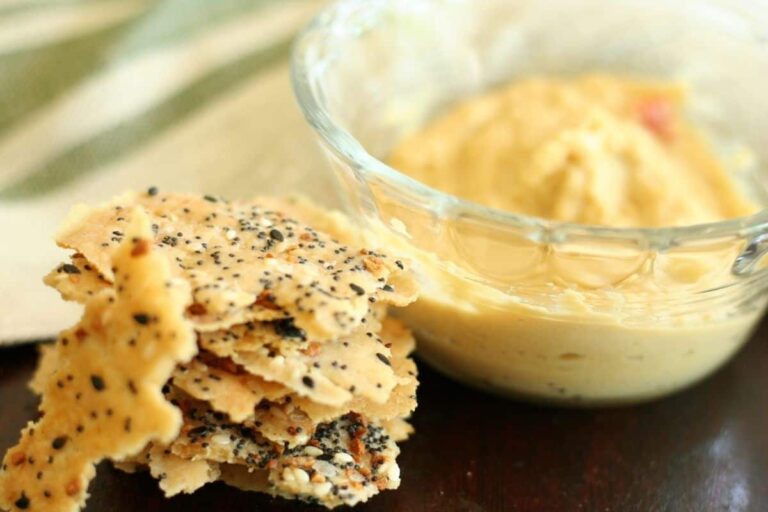
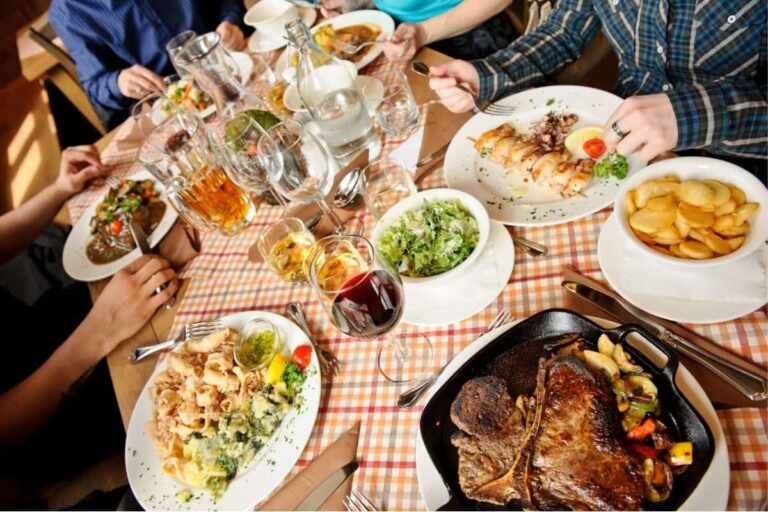



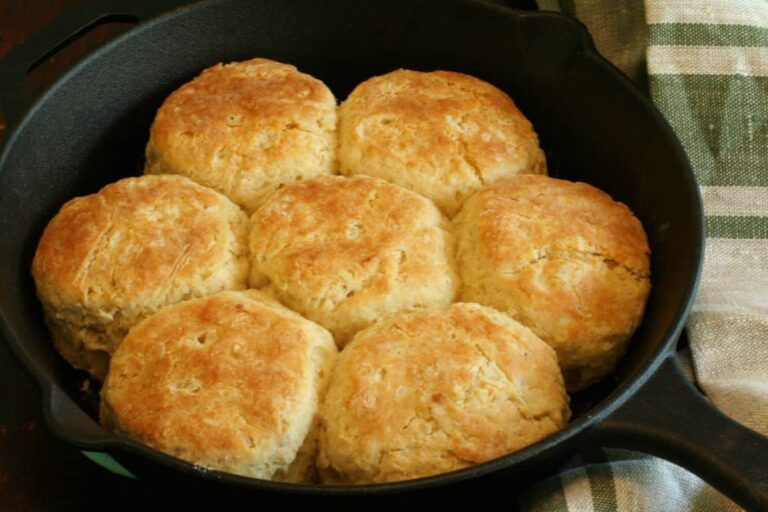
great article . it is going to help get my dutch oven clean thank you
My pleasure, I hope your dutch oven cleaning goes well!
Excellent article. I’ve been given a rusty old dutch oven. After following your cleaning tips with A LOT of elbow grease and help of a grinder with a metal brush attachment I’ve now cleaned it, dried it and am now about to season (I’ve have a heap of cast iron pans so I know this bit) as for storing (we will only use it for camping trips) other than being oiled and stored in the garage. Should I wrap it in something?
Hi Kieran – the main thing with long-term storage is to avoid moisture. I would also recommend making sure that, if you oil it, it’s not with butter, bacon grease, or any kind of fat that might go rancid during long-term storage. I’ve heard that you should avoid wrapping cast iron in plastic wrap, but that’s not from my own personal experience, as I use all my cast iron regularly. I would think that, if you’re not storing it in a high-moisture area, you’d be fine to simply wrap it in brown craft paper or something similar. If the area is high humidity, then my recommendation would be to store it in an extra large ziploc bag with silicone gel packets to absorb any ambient moisture. I hope this helps!